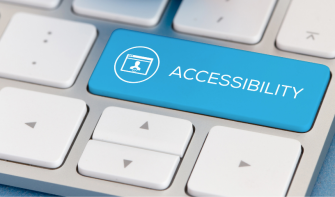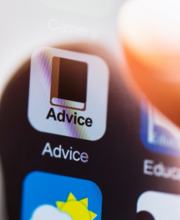Wherever possible we are committed to making all our methods of communication as accessible to as many people as possible. Special thanks to the BBC who help describe the best methods of accessibility below.

Accessibility is the word used to describe whether a product (for example, a website, mobile site, digital TV interface or application) can be used by people of all abilities and disabilities.
For instance, a website is accessible if all people, including disabled and elderly people, can use it. At the AET, we aim to ensure that all our training, resources and information is accessible – this is called usability.
On a website, accessibility depends on how a person’s disability affects the way they perceive information on a page and how they navigate within and between pages. Elements that affect accessibility include:
- For people who can’t see very well: the colours and the contrast between colours; the size of text; the choice of fonts
- For people who are blind: how a screen reader interprets the elements on a page (for example, alt tags for images, and title tags for links); the inclusion of audio description for video content
- For people who can’t hear very well: how any audio content is represented graphically (for example, including subtitles or signing on video content)
- For people who find a keyboard or mouse hard to use: the ease with which someone can navigate to parts of the page (for instance, by tabbing); auto-completion of forms
- For people who find words difficult: the length of sentences and paragraphs; the complexity of the vocabulary; the choice of fonts and size of text; the availability of spelling checkers and word prediction; the opportunity to have text read out loud
Accessibility standards on the AET website
We are proud to announce that we have installed a new accessibility toolbar!
Recite Me web accessibility and language toolbar
Recite Me is innovative cloud-based software that lets visitors to our website view and use it in the way that works best for them.
We have added the Recite Me web accessibility and language toolbar to our website to make it accessible and inclusive for as many people as possible.
It helps the one in five people in the UK who have a disability, including those with common conditions like sight loss and dyslexia, to access this website in the way that suits them best.
It also meets the needs of the one in ten people in the UK who don’t speak English as their first language, by being able to translate our web content into over 100 different languages.
How do I access the Recite Me toolbar?
You can open the Recite Me language and accessibility toolbar by clicking on the Accessibility Options button.
This Accessibility Options button appears in the top right on every page of our website.
After you click on the Accessibility Options button, the Recite Me toolbar opens and displays a range of different options for customising how the website looks and how you can access the content.
How does Recite Me help me access this website?
Recite Me helps people to access our website to do the things they need to do, like find information about how to access our service by making complaints, access publications and read news.
The Recite Me toolbar has a unique range of functions. You can use it to:
- Have the text on our website read aloud (including PDFs)
- Download the text as an MP3 file to play it where and when it suits you
- Change font sizes and colours
- Customise background colour
- Translate text into more than 100 different languages
- Access a fully integrated dictionary and thesaurus
You can find out more about how Recite Me works from the Recite Me user guide.
Can I get support with Recite Me?
If you have any questions about Recite Me you can contact them:
- by email info@reciteme.com
- or call them on (+44) 0 191 432 8092.
